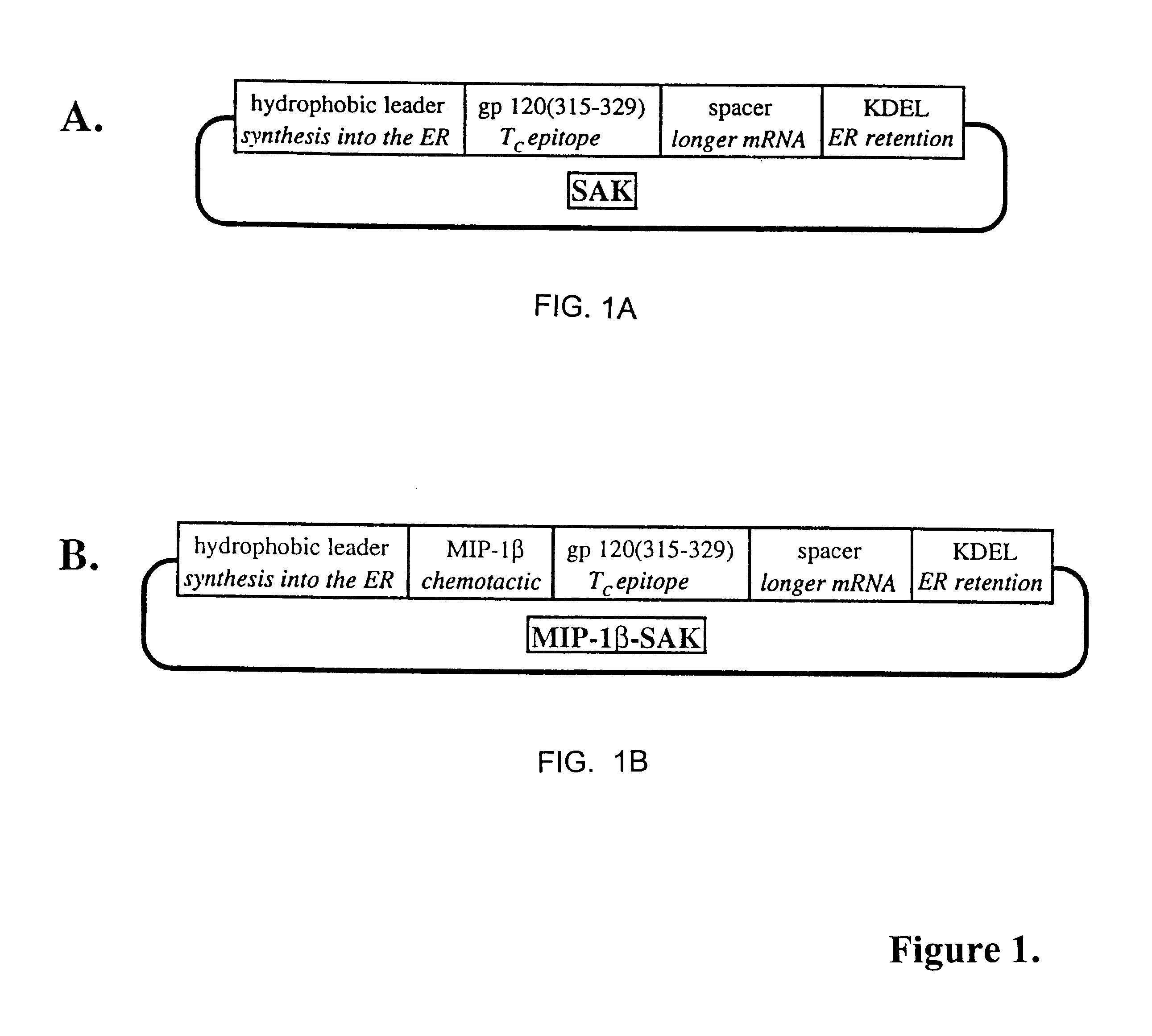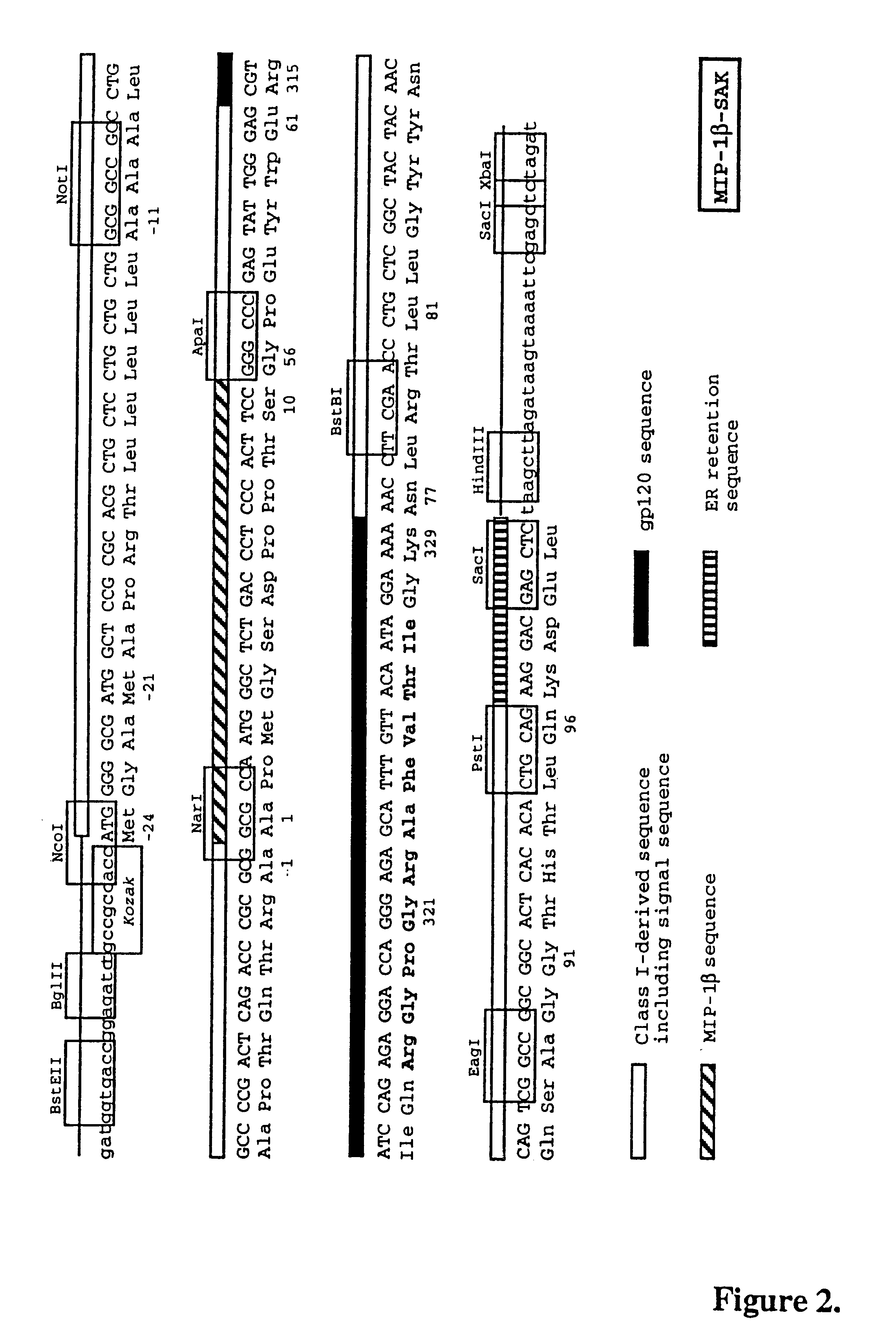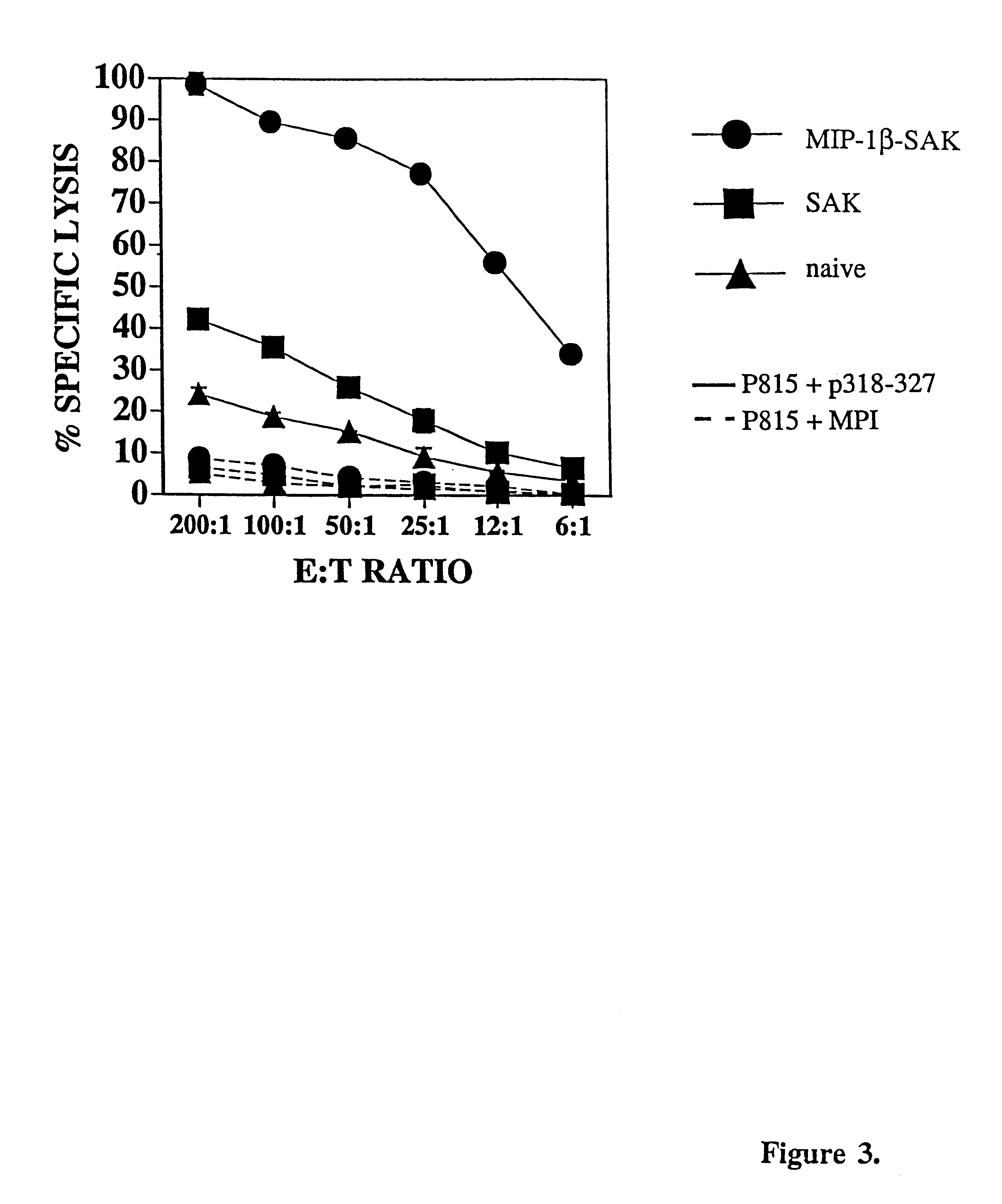Use of immunopotentiating sequences for inducing immune response
a technology of immunopotentiating sequences and immune responses, applied in the direction of peptides, chemokines, viruses, etc., can solve the problems of hiv gp160, subunit vaccine use suffers, hiv gp160 itself can have deleterious effects, etc., to achieve satisfactory immune response, increase ctl production, and boost ctl production
- Summary
- Abstract
- Description
- Claims
- Application Information
AI Technical Summary
Benefits of technology
Problems solved by technology
Method used
Image
Examples
examples
These experiments were aimed at enhanced generation of CTLs specific for the HIV gp120 (316-325) sequence. In designing the mini-gene for expression by a vector, the subcellular localization of the mini-gene product is directed by utilizing signalling motifs, which are amino acid sec(aiences contained within proteins for directing the location of proteins within the cell. A hydrophobic leader sequence was chosen to direct the import of the mini-protein into the ER (Gierasch, L. M; Biochemistry 28:923-930 (1989)) and a KDEL sequence (SEQ ID NO:23) (lys-asp-glu-leu) (Pelham, H. R .B.; Annu. Rev. Cell Biol. 5:1-23(1989); Teasdale, R. D. and M. R. Jackson; Annu. Rev. Cell Dev. Biol. 12:27-54 (1996)) for the retention of the mini-protein within the ER (FIG. 1A) have been incorporated. The inclusion of the chemokine sequence from MIP-1.beta. into the construct is shown in FIG. 1B. The nucleotide sequence is given in FIG. 2.
The gene chosen as a model to study is the gp120 IIIB coat protein...
PUM
| Property | Measurement | Unit |
|---|---|---|
| Fraction | aaaaa | aaaaa |
| Length | aaaaa | aaaaa |
| Immunogenicity | aaaaa | aaaaa |
Abstract
Description
Claims
Application Information
 Login to View More
Login to View More - R&D
- Intellectual Property
- Life Sciences
- Materials
- Tech Scout
- Unparalleled Data Quality
- Higher Quality Content
- 60% Fewer Hallucinations
Browse by: Latest US Patents, China's latest patents, Technical Efficacy Thesaurus, Application Domain, Technology Topic, Popular Technical Reports.
© 2025 PatSnap. All rights reserved.Legal|Privacy policy|Modern Slavery Act Transparency Statement|Sitemap|About US| Contact US: help@patsnap.com



